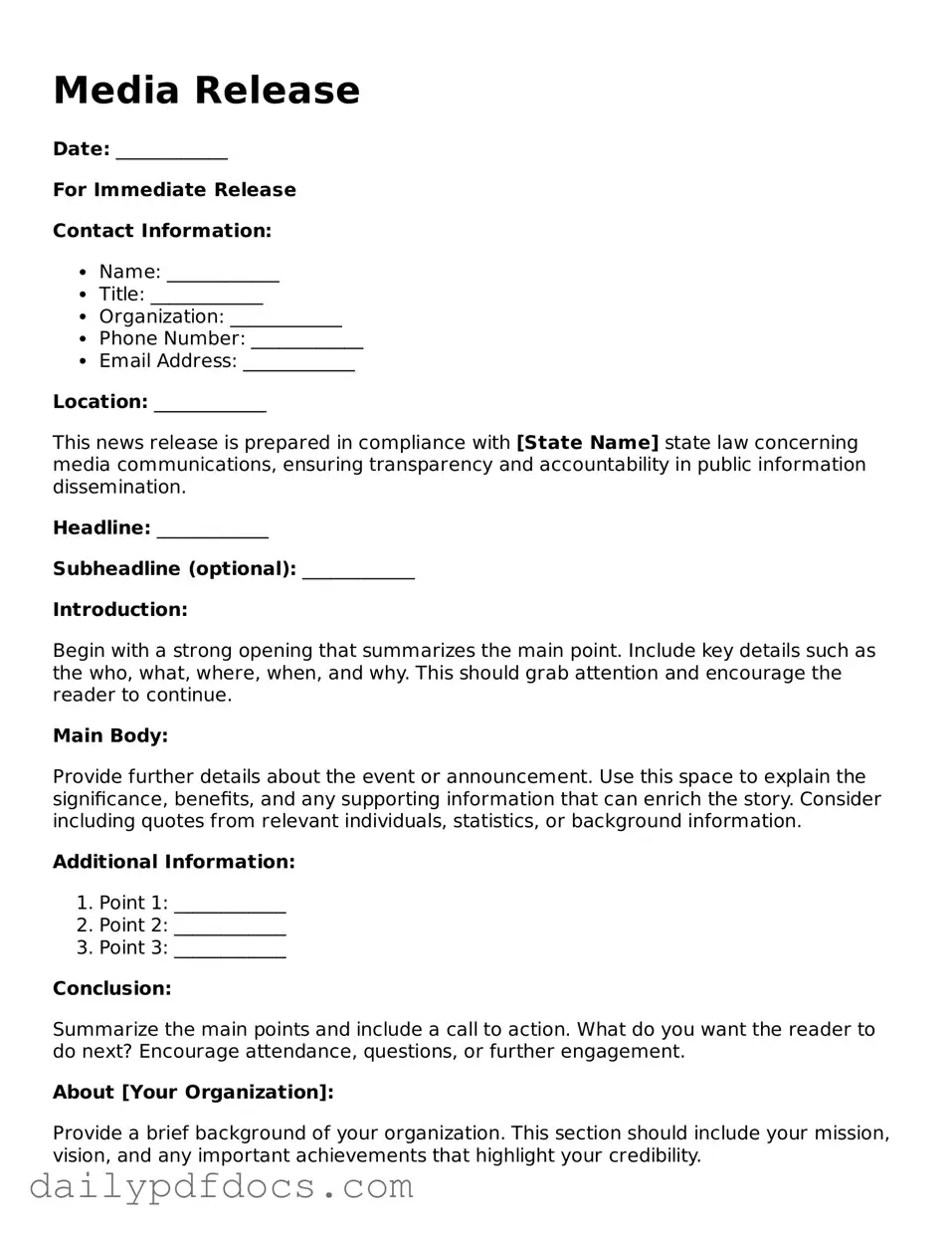Media Release
Date: ____________
For Immediate Release
Contact Information:
- Name: ____________
- Title: ____________
- Organization: ____________
- Phone Number: ____________
- Email Address: ____________
Location: ____________
This news release is prepared in compliance with [State Name] state law concerning media communications, ensuring transparency and accountability in public information dissemination.
Headline: ____________
Subheadline (optional): ____________
Introduction:
Begin with a strong opening that summarizes the main point. Include key details such as the who, what, where, when, and why. This should grab attention and encourage the reader to continue.
Main Body:
Provide further details about the event or announcement. Use this space to explain the significance, benefits, and any supporting information that can enrich the story. Consider including quotes from relevant individuals, statistics, or background information.
Additional Information:
- Point 1: ____________
- Point 2: ____________
- Point 3: ____________
Conclusion:
Summarize the main points and include a call to action. What do you want the reader to do next? Encourage attendance, questions, or further engagement.
About [Your Organization]:
Provide a brief background of your organization. This section should include your mission, vision, and any important achievements that highlight your credibility.
### END ###
